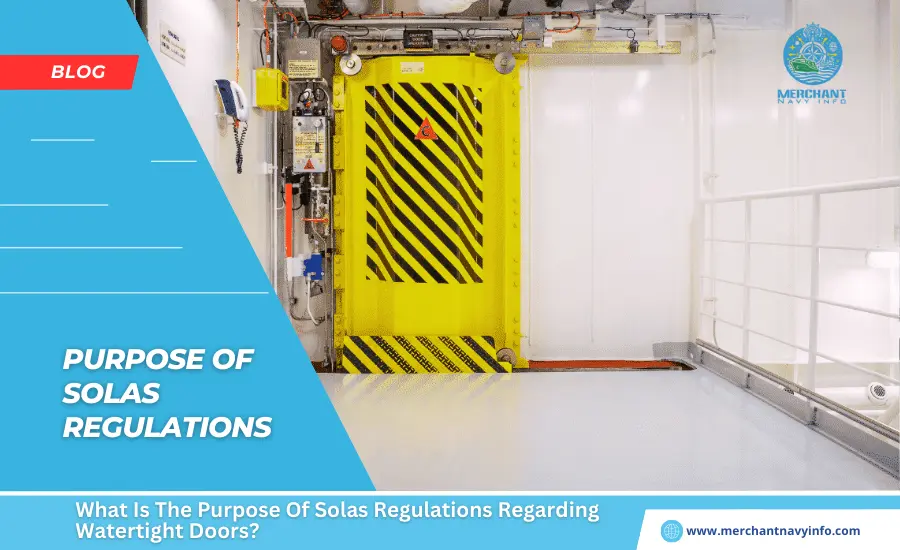
Watertight door are special doors found on ships that is to prevent the ingress of water from one compartment to another in case of flooding or accidents, acting as a safety barrier and limiting the spread of water inside the ship. These doors are used in many ships, including container ships, large passenger liners, oceangoing vessels, oil exploration vessels, etc., in fore and aft walkways below decks and in engine room bulkheads leading to shaft tunnels. They are used in areas with high risk of flooding, such as areas like engine room compartments and shaft tunnels, and parts of these places. It is therefore important that the crew is familiar with the systems and locations of the various powered watertight doors on board the ship. First, let us understand what the words waterproof and weatherproof mean.
Waterproof, as Defined by SOLAS, means
Able to prevent the penetration of water from any direction under the water pressure that may occur both in intact and damaged conditions. All-weather is defined as the absence of water entering the ship in any sea condition. Simply put, a watertight door is able to prevent water from penetrating in both directions when exposed to water pressure: Able to withstand water pressure from both sides. They are designed to withstand continuous submersion and therefore are installed below the waterline in places such as wave tunnels, ballast tanks, bow thruster compartments etc.
All openings below the waterline must be waterproof. Weathertight doors, on the other hand, are designed to withstand short-term submersion. They are located above the waterline and is can withstand high seas, i.e., weather conditions from outside. This article provides a brief overview of the function and operating requirements of watertight doors. Watertight doors are classified into three types which regulate the functioning of the watertight door:
Various Types Of Watertight Doors On Ships
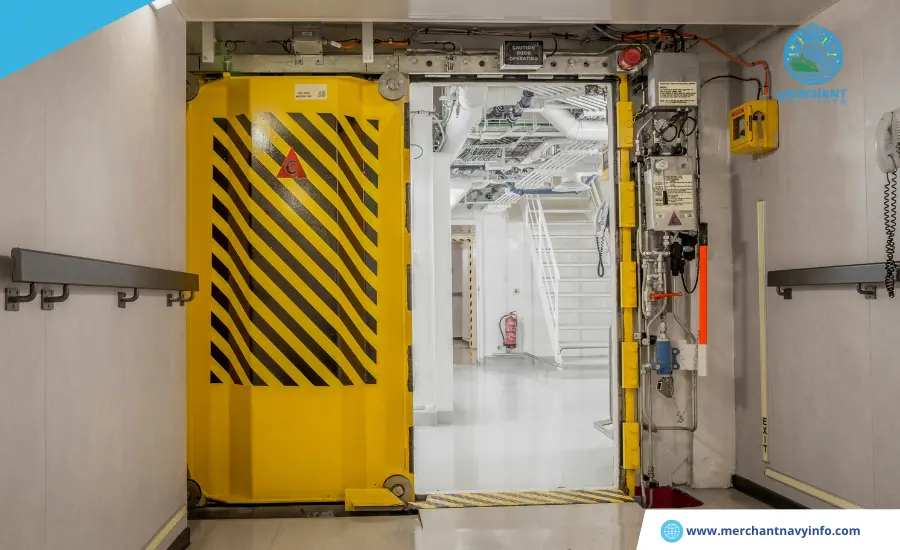
Type A
This type of watertight door must be closed and should only be left open when personnel are working in the adjacent compartment.
Type B
This type of watertight door must be kept closed at all times and can only be opened long enough to allow staff to pass through the door compartment.
Type C
This type of watertight door is to be kept closed all the time. It may be an opened only for sufficient time when an personnel are passing through the door compartment.
Type D
This type of watertight door does not comply with SOLAS regulations. These doors must be closed before the start of the trip and must remain closed during the trip. These doors cannot be upgraded to another category.
Dangerous Situations For The Vessel When The Doors Have To Be Closed
- When visibility is restricted.
- In ports where port restrictions do not prescribe pilotage requirements.
- It must be closed when the water depth is less than three times the draught.
- High traffic density.
- Any other factor if the Master considers the situation dangerous.
Watertight Doors Can Be Further Classified Into The Following Types
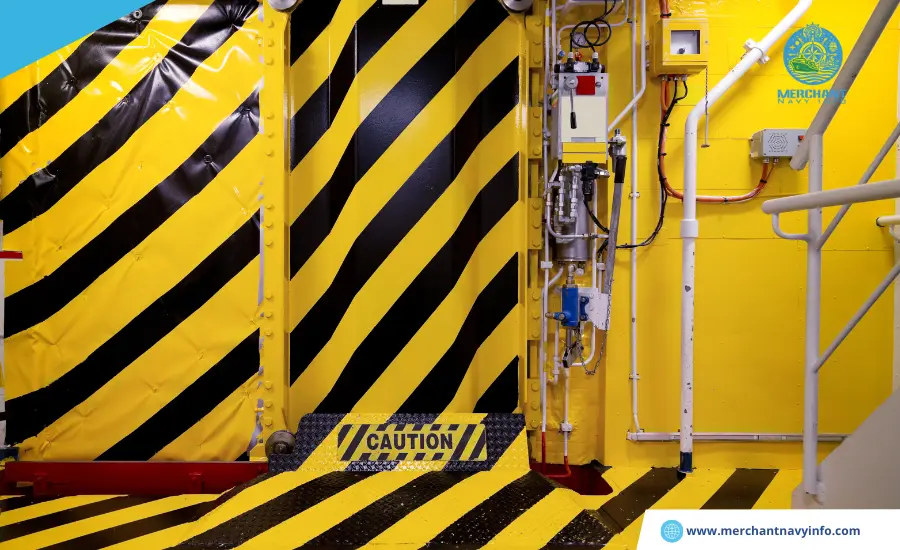
Hinge Type
Doors that have a pivoting movement about a vertical or horizontal edge.
Sliding Type
Doors are driven by hydraulic cylinders or electric motors and move horizontally or vertically approximately parallel to the plane of the door. Electric watertight doors are very heavy and powerful. If used improperly, they can cause injury or death. Everyone on board a vessel must be aware of the risks involved and how to operate safely.
What Risks Are There With Electric Sliding Doors?
- If a watertight door is left open or leaks in case of water ingress or internal flooding, the ship will lose its stability and buoyancy.It is therefore important to keep watertight doors closed at all times.
- If left open, smoke and fire can spread throughout the ship, causing personal injury and damage to the ship.
- Lack of situational awareness and understanding of how watertight doors work can lead to crew members being trapped in the door.
- Personal injury – In the shipping industry, there have been many reports of seafarers getting injured or losing fingers due to improper handling or lack of knowledge of watertight doors. It is, therefore, important that all crew members are trained on proper operation and maintenance procedures. It is always better to have one hand free to operate the controls. Loose or unsecured objects left near the door can cause the door to malfunction.
Ship Watertight Door Training
- Watertight door operation training is conducted weekly. In addition, doors must be checked before departure.
- All watertight doors, both hinged and powered, must be operated daily during the tour.
- Doors must be operable from both local and remote locations: from the bridge or ship’s control centre.
- If the door is operated from a remote location, it must provide an audible and visual alarm when closing.
- The remote operating location must indicate both open and closed.
Solas Rules for Closing Watertight Doors
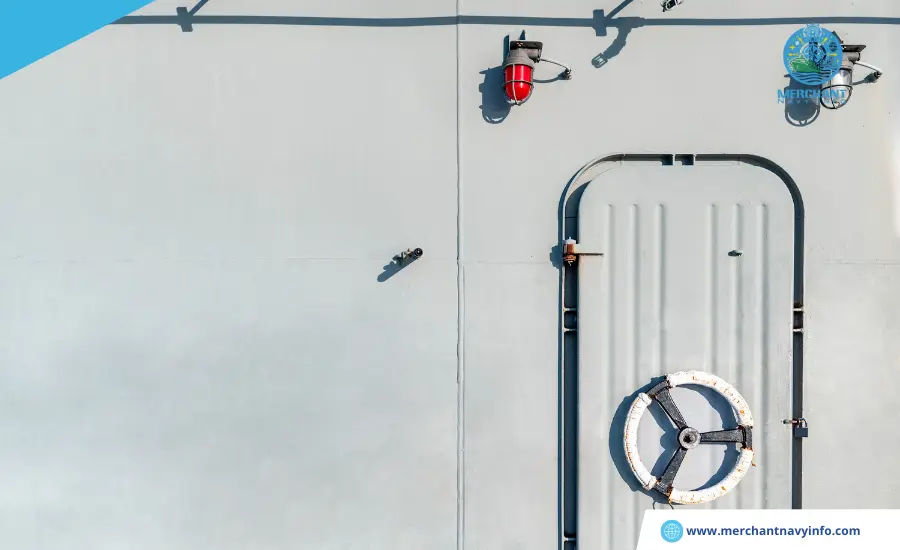
(Solas Rules, SOLAS Chapter II-1, Rules 14 to 25 Watertight Doors)
Powered watertight doors may be operated locally or remotely from the bridge. Local control means that the door is opened and closed using the controls on the door itself. Doors operated in BRIDGE CONTROL mode may also be opened using local control, but it should be noted that the door will close as soon as the local control lever is released.
- All powered doors must be capable of being closed simultaneously within 60 seconds from the bridge and the Ship Control Centre (SCC) when the vessel is upright.
- Doors shall have an approximately uniform closing speed when powered. The closing time from the start of door closing to complete closure shall in no case be less than 20 seconds or more than 40 seconds when the vessel is upright.
- If the door is manually operated, it shall close within 90 seconds in the event of a power failure.
- Powered sliding doors must be capable of closing when the vessel lists 15 degrees to either side.
- Powered sliding doors must be equipped with a local audible alarm distinct from all other alarms in the area. This alarm shall sound for at least 5 seconds when the door is closed by remote control, but not less than 10 seconds before the door begins to close and travel begins. The sound shall be audible until the door is completely closed.
Watertight Door Maintenance
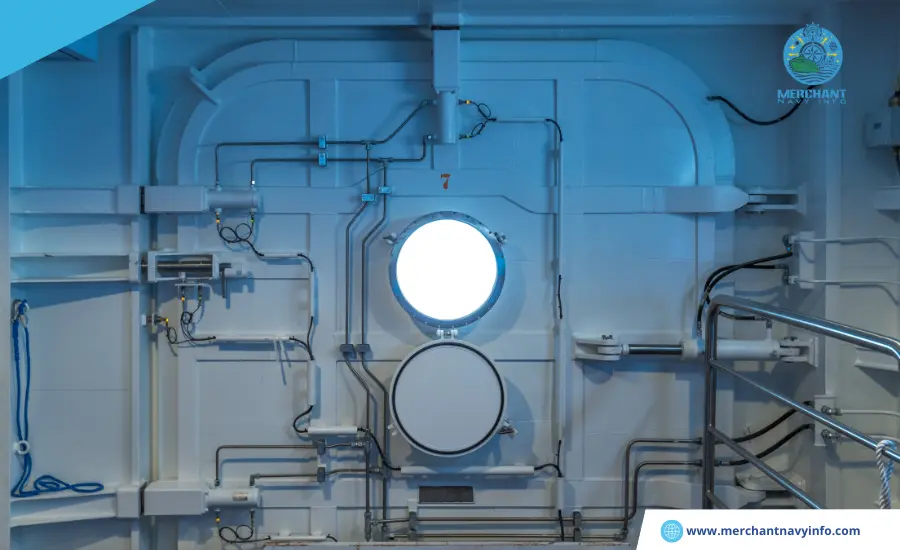
To carry out routine inspection and maintenance of the watertight door, the vessel’s routine maintenance system must be followed. This must include the correct functioning of the entire system, in particular:
- Warning devices and alarms
- Electrical/hydraulic mechanisms
- Valves
- Level indicators
- Seals
- Lights
It is also important to follow the manufacturer’s maintenance procedures. A warning notice must be posted before carrying out any maintenance work.
- The door must be free of dirt and airborne particles. Door frames and seals should be cleaned regularly and when necessary. Seals can be lubricated with silicone oil.
- Wheels and bearings should be checked for excessive wear and damage. Rails should be cleaned and checked for damage.
- Hydraulic systems should be inspected regularly for leaks. Particular attention should be paid to the condition of pumps, hydraulic cylinders, hydraulic hand pumps, and pipe connections. Oil levels should be checked and topped up if necessary. Hydraulic oils and filters should be changed according to the vessel’s PMS.
- Great care should be taken when painting doors and door areas. Painting the rubber seals and piston rods of cylinders should be avoided.









